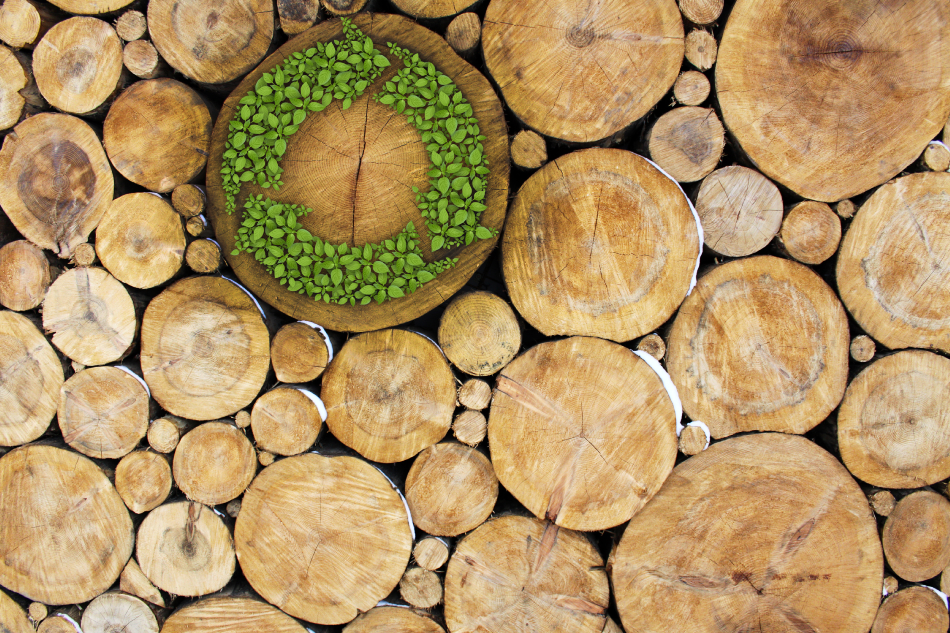Article Updated on 15th March 2021

Image Credit: Merkushev Vasiliy/Shutterstock.com
A recent study conducted by researchers at the University of Maryland discusses a novel technology that channels incidental energy from wood sources into stored electricity for future use.
Improving Thermal Energy Efficiency
The process industry, which is involved in the production of processed goods in large quantities, is largely responsible for a significant amount of thermal energy loss. Within this single industry, a significant amount of energy is consumed by various equipment such as pumps, compressors, boilers, prime movers, evaporators, furnaces, process heaters, sterilization equipment, and others. While a considerable amount of effort has been made to optimize the energy efficiency of these process systems, many different industries, including those involved in item processing, still create a large proportion of waste heat that will ultimately be rejected into the environment.
Heat Recovery
Over the past several decades, various economic and political situations have pushed industries around the world to conduct intensive research on waste thermal energy recovery systems. For example, during the Middle Eastern oil crisis in the 1970s, industries in the United Kingdom created more than 200 projects focused on waste heat recovery, methods of converting waste into fuel sources, and improving process instrumentation, control, and insulation. As fuel prices began to drop during the mid-1980s, there was less of a need for these industries to improve their thermal energy management, and fewer such projects were created.
More recently, the growing environmental concern of energy use and its waste management have again created a need for industrial sectors around the world to reevaluate their impact on the environment. Although high-grade heat is viable for capture by industrial processes, there are limited processes capable of converting low-grade heat, which is typically derived from fossil fuels, into other energy sources. Some of the few methods that have been applied to the generation of electricity from low-grade heat include the Kalina cycle, organic Rankine cycles, and both the thermoelectric and thermogalvanic effect.
What is Ionic Heat-to-Electricity Conversion?
Ionic heat-to-electricity conversion, which is typically achieved by using thermionic generators, is used to convert heat or light into an electrical current by manipulating the temperature difference that exists between two metallic plates within the generator. Typically, one of these metallic plates is heated by either thermal conduction or exposure to incident light, allowing any electrons that are present on the surface of the plate to evaporate. Once evaporated, these electrons condense onto the surface of the other “cold” metallic plate, which is separated from the “hot” place by a vacuum. As the evaporated electrons condense onto the cold plate, a charge difference arises to create a usable electric current.
The Promise of Cellulose
Despite the usefulness of ionic heat-to-electricity conversion, its practical application at the industrial level has been limited because of relatively low conversion efficiency. One way researchers expect to optimize this electricity conversion method is to maximize the thermally generated electric signal between the negative and positive ions of the electrolyte. To this end, a group of researchers at the University of Maryland created a cellulosic membrane capable of achieving significant enhancement in the thermally generated voltage of this type of system.
In their work, the researchers began by soaking large slabs of American basswood in sodium hydroxide (NaOH) solution, allowing for the extraction of lignin, which is a natural polymer wrapped around cellulose fibers. In addition to extracting lignin, this chemical process also breaks the hydrogen bonds that may remain around the cellulose nanofibers, ultimately resulting in a crystalline structure to form. When exposed to heat, the sodium ions within the nanostructure travel at a freer pace as compared to the hydrogen ions, which creates an electric potential that can be captured for future electricity use.
The Future of a Wood-Based Ionic Conductor
The work conducted by the University of Maryland researchers demonstrates the ability of a wood-based ionic conductor that has the potential to be incorporated into many different applications ranging from temperature sensing devices to low-grade thermal energy harvesting. Furthermore, this flexible, lightweight, and biocompatible technology could solve many of the industrial problems related to low-grade heat waste.
References and Further Reading
Ammar, Y., Joyce, S., Norman, R., Wang, Y., & Roskilly, A. P. (2012). Low grade thermal energy sources and uses from the process industry in the UK. Applied Energy 89(1); 3-20. DOI: 10.1016/j.apenergy.2011.06.003.
Meir, S., Stephanos, C., Geballe, T. H., & Mannhart, J. (2013). Highly-efficient thermoelectric conversion of solar energy and heat into electric power. Journal of Renewable and Sustainable Energy 5 (043127). DOI: 10/1063/1.4817730.
“Energy harvesters pick up power” – Nature
Disclaimer: The views expressed here are those of the author expressed in their private capacity and do not necessarily represent the views of AZoM.com Limited T/A AZoNetwork the owner and operator of this website. This disclaimer forms part of the Terms and conditions of use of this website.